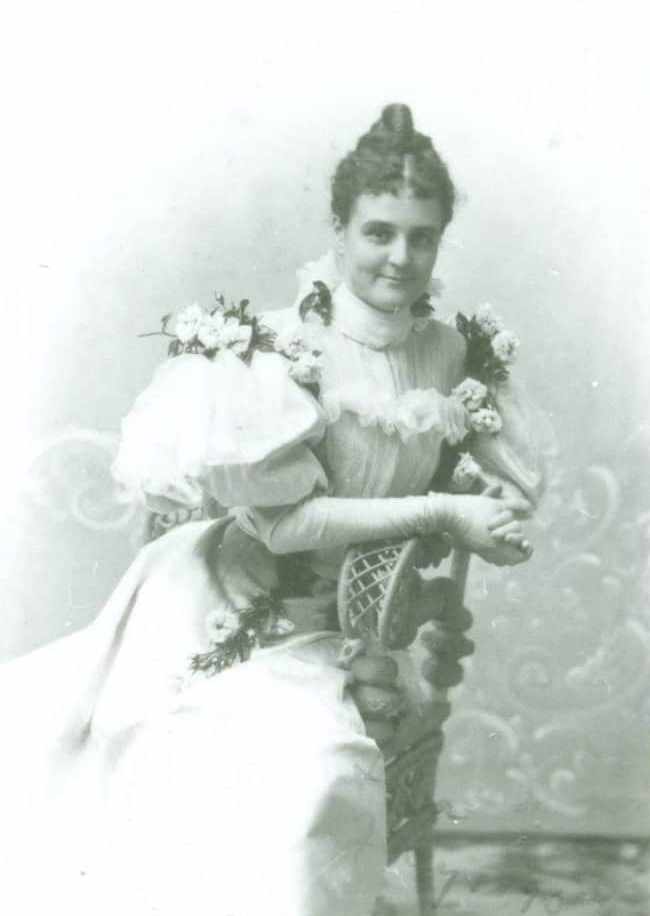Louis and Sally Church: First Stewards of the Olana Legacy
Valerie Balint, Interim Director of Collections and Research
Last year we celebrated the saving of Olana in 1966, and its long-term successful stewardship and restoration through the collaborative efforts of New York State and The Olana Partnership. As we know, in 1953, over a decade before Olana Preservation Inc., and New York State saved Olana, Sally Good Church welcomed a young scholar, David Huntington for tea, and he was given permission to use the resources at Olana to research Frederic Church for his dissertation. This led to his passion for Church and Olana, and to his leading the charge to save Olana upon Sally’s death in 1964.
But truly Sally and her husband Louis Palmer Church served as the initial stewards of Olana. They were the first torchbearers for the legacy of Frederic Church, his art and all he had created here. Together they preserved the essence of Olana – changing very little during their over 60-year residency. It is because of their love of Olana that the intact richness remained here to save.
In 2017 we continue our celebration, in particular, the 50th anniversary of the site opening as a public museum in June 1967.
As a preservation story the saving of Olana is compelling, and by necessity focuses on Sally Church as an elderly woman, as that story begins to unfold. Yet, who was this woman who captured the heart of Frederic and Isabel Church’s youngest son, and what was their life like here at Olana?
Their story begins on the eve of their adolescence; likely meeting through mutual friends in the late 1880s. Sarah Baker Good, known as Sally, grew up in affluence in Lock Haven, Pennsylvania, the daughter of a Civil War veteran, successful railroad contractor and industrial entrepreneur, George Good Sr. She attended St. Agnes School in Albany, NY where she became friends with Hortense Ferguson, affectionately known by the nickname Hortie. Hortie and her brother Smith were close friends with the Church children, and their parents were friends with Frederic and Isabel. Their father was a successful doctor in Troy, and their summer home was at Mt. Merino, a stone’s throw from Olana. The two families socialized frequently, and Sally was often in residence at Mt. Merino on holiday. No doubt, the young Louis and Sally were thrown together on numerous occasions. In addition, Sally’s older brother Harry went to St. Paul’s School in Concord, which all three Church boys attended, so they likely knew each other as well. Lastly, their circles intersected through Sally’s cousin, the Reverend George Yeisley, a pastor in Hudson, and a longtime friend of Frederic Church.
Louis Palmer Church left St. Paul’s School in 1887, but unlike his older brothers he did not attend Princeton. Instead, beginning in late 1891 he agreed to come on, at his aging parents’ request, to assist them in taking care of Olana. As his mother wrote to his sister Downie: “He will be head, of our place – with a salary – Your father thought he needed one of his sons, to take charge, and Louis, dear boy is the one.” A year later his salary had been increased and over the next nine years he would prove himself indispensable to both his parents. By 1894, an ongoing and rich correspondence between Louis and Sally, still in the Olana archives, reveals they had become secretly engaged. Clearly in love, one can assume that responsibilities to his then ailing parents and to the upkeep of Olana led to the deferment of both official engagement and marriage.
Isabel Church died in 1899 and Frederic died the following spring, in April 1900. Louis inherited Olana. Shortly thereafter, he announced to friends and family his engagement to Sally. Many congratulations by friends and family were accompanied by clues that their previous “secret” was not as secret as they supposed. Longtime friend and family lawyer Miles Graves expressed to Louis that his father had suspected this before his death.
Upon the news, his sister Downie expressed to Sally that “It is just perfect the whole thing, my little Mother and you were so devoted and I couldn’t have chosen anyone in the whole world that I would rather see filling her dear place at Olana—and this you know is the biggest compliment I could pay you.” These sentiments were echoed again and again by friends who knew the couple closely and Sally’s sincere appreciation of Olana: “Not a girl who knows and loves Olana as much as you do.”
Sally Good, soon to be Church, was a fun-loving young woman and social butterfly. She had numerous suitors, one of whom upon hearing the news wrote she would be “gone but not forgotten.” Many in their circle understood the announcement to be the culmination of their sustained attachment and mutual commitment to Olana: “Head of a magnificent establishment and all the wonderful things which go with it . . . and you have had for a long time all the best of Mr. Church’s love.”
The couple planned a January 1901 wedding in her hometown of Lock Haven. Like so many brides Sally went on a crash diet – hers involved port and sugar pills – to look great in her dress for the big day. Many friends could not make the winter wedding but sent celebratory telegrams, teasing that they had “waited until the 20th century to do it!” The robust gift register still in the Olana archive confirms Sally’s own jokes to Louis that “the gifts are pouring in and I feel like two horse thieves.”
For their wedding Sally gave Louis cufflinks. Consistently throughout their marriage she called him “Old dearie,” “Lou” and “dearest Old Man.” These diminutives reveal her view of him as the ever responsible old soul that also marked his place among his family and intimate friends. After a honeymoon in Europe the two settled into Olana. They electrified the house and upgraded various mechanical systems, but much of life remained as it had been in Frederic and Isabel’s time including the working farm and they made very few changes to the decorative aspects of the house. They even kept much of the same staff, including Jane the cook.
The couple entertained frequently, and they were considered gracious hosts. At table there were often six courses with guests writing home about pancakes, cakes, salads and more, which all led to indulgence. “It is Sally’s exuberant, sweet hospitality that causes the flow of food.” Receipts and photos show Sally to be a bit of a fashion maven, a fitting mistress for Olana. There are wonderful descriptions of them setting out side by side in their motor car, eyes covered with big driving goggles, which were a must, and a huge picnic hamper strapped to the back. Excursions were frequent and they often went to visit Louis’ brother Theodore and his wife Amelie. The two couples were close—they would meet in Coney Island, or set out on Theodore’s boat “Olana.”
The couple would eventually buy a winter home in Port Sewall, Florida and often took friends to the camp Frederic Church had purchased in Maine in 1878. But Olana remained their locus. They hosted Downie, her children and even her grand and great-grandchildren. Louis would send his brother Frederic brandied peaches from the orchards to evoke the dreamlike memories of home.
Throughout their decades at Olana they changed relatively little and servants’ oral histories reveal a desire to keep everything in its historic place. The two were devoted to Olana and each other. Sally was always urging Louis to eat slowly and expressing concerns for his health. Every morning Louis had a flower laid out at breakfast for his wife as a token of his love. In 1943 Louis died at Olana, and for two more decades Sally continued to preserve Olana until her death in 1964 at the age ninety-six. Only a few years after Louis’ death, in a 1948 article for the Saturday Review of Literature, noted writer James Thrall Soby described Frederic Church’s art, and the visit he had recently made to Olana. He said: “It is to be hoped that ‘Olana’ will one day be preserved as a public park . . . Nowhere else that I know of is there so grand and complete a monument to later American romanticism in the fine arts.” We now know that the road to being a park and museum would take many twists and turns before coming to fruition.
That said, there is no doubt that we owe a great debt to the first two carriers of Frederic Church’s legacy — two teenagers who met in the Hudson Valley and went on to enjoy to the fullest all the magic that Olana had to offer to them.




